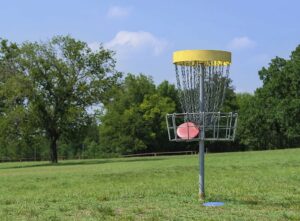If you’ve ever been curious about how to play golf, you’re in the right place! In this blog post, we’ll take you through a step-by-step guide on getting started with golf, understanding its fundamental techniques, playing a round of golf, and even provide some tips for improvement. Whether you’re a beginner or looking to enhance your skills on the course, this comprehensive walkthrough will help you navigate the world of golf with ease. So grab your clubs and let’s dive into the exciting game of golf together!
1. Getting Started
One key tip for beginner golfers is to find a local golf course that matches their skill level and schedule, allowing them to practice different shots on diverse terrains.
Before diving into the world of golf, it’s important to understand the basics. Familiarize yourself with the aim of the game – getting your ball into each hole in as few strokes as possible while maintaining balance and control. Beginners should start by purchasing a set of clubs that includes a driver, irons, and a putter, ensuring you have the right tools for each situation.
Understanding where to play is crucial when beginning your golf journey. Find a local golf course that suits your skill level and schedule; this will provide opportunities to practice various shots and overcome challenges on different terrains. Once you’ve grasped these initial steps, you’ll be well on your way from tee to green!

1.1. Understanding the Basics
- Golf is a game played with a club and ball, aiming to hit the ball into a series of holes in as few strokes as possible.
- The objective of golf is to complete each hole by hitting the ball from the tee (starting point) to the green (the area around the hole), using as few strokes as possible.
- Beginners should familiarize themselves with common terminology such as fairway, rough, bunker, and hazards.
- Balance and proper grip are essential for executing accurate shots.
Gathering Necessary Equipment:
- To get started playing golf, beginners will need to purchase or borrow a set of golf clubs that includes irons, woods, putter etc.
- Other essential equipment includes golf balls and tees. It’s also recommended to wear comfortable clothing and appropriate footwear.
Finding a Golf Course:
- ocating nearby golf courses can be done through online directories or by contacting local clubs directly.
1.2. Gathering the Necessary Equipment
To begin your golf journey, you’ll need a few essential items. Firstly, invest in a set of clubs that suits your skill level and budget; buying used clubs can be a cost-effective option for beginners. Additionally, ensure you have comfortable golf shoes with good grip to maintain balance during swings. It’s also advisable to purchase golf balls suitable for beginners as they provide better control and forgiveness on mishits.
1.3. Finding a Golf Course
Finding a Golf Course: To find a golf course, you can start by searching online or using a golf course directory. Look for courses that cater to beginners and offer lessons or beginner-friendly amenities. Consider the distance from your location and the challenges each course offers, such as water hazards or sand traps. Once you have found potential options, visit their websites to gather more information about their facilities and pricing.
2. The Fundamentals of Golf
2.1. Grip and Stance
- Correct hand positioning: Place your left hand on the club, with the grip resting in your fingers rather than your palm. Position your right hand below the left, creating an overlapping or interlocking grip.
- Proper grip pressure: Hold the club with enough firmness to maintain control, but avoid gripping too tightly as it can restrict movement and result in a tense swing.
- Establishing a balanced stance: Stand with your feet shoulder-width apart, knees slightly flexed. Distribute weight evenly between both feet for stability during the swing.
These fundamental aspects of grip and stance are essential in setting up a solid foundation for executing accurate shots in golf. By mastering these techniques, you will enhance control over the club and increase consistency in your swings, leading to improved performance on the course.
2.2. Swing Mechanics
To achieve a smooth and powerful swing, it is crucial to focus on the fundamentals of swing mechanics. First, maintain a balanced stance with your feet shoulder-width apart and knees slightly flexed. Next, initiate the backswing by turning your shoulders while keeping your arms extended. Finally, unleash the power as you rotate your hips through impact, transferring weight from back foot to front foot for maximum distance.
Mastering swing mechanics requires practice and precision. Start by perfecting your grip and stance before moving onto more advanced techniques like maintaining proper posture throughout the swing and generating clubhead speed through effective body rotation. With consistent effort and attention to detail in each component of the golf swing, you can enhance both accuracy and distance in every shot.

2.3. Understanding Golf Etiquette
Respect the Course: As you navigate the golf course, be mindful of your surroundings. Avoid causing damage to the greens and fairways by repairing divots and pitch marks. Keep carts on designated paths when applicable, and follow any signage or guidelines provided by the course management.
Practice Good Sportsmanship: Golf is a game that requires both skill and patience. Show respect towards other players by refraining from distracting noises or movements during their swings. Additionally, honor the rules of play by not improving your lie or deliberately playing slow to disrupt others’ rhythm.
Keep Up with Pace of Play: Efficiently moving around the course ensures an enjoyable experience for all players involved. Be ready to hit when it’s your turn, and avoid unnecessary delays such as excessive searching for lost balls. If you fall behind, allow faster groups to play through in order to maintain a steady pace.
Maintain Proper Attire: Dress appropriately for golfing activities as per each club’s dress code requirements. Generally, collared shirts or suitable alternatives are preferred along with proper footwear that won’t damage turf surfaces.
Be Mindful of Others’ Shots: When someone is preparing to hit their shot nearby, remain still and quiet until they have completed their swing. This allows them to focus without distractions or interruptions.
Respect Fellow Players’ Privacy: Avoid walking within another player’s line of sight while they are setting up for a shot in order not to disturb their concentration.
3. Playing a Round of Golf
3.1. Teeing Off
The first step in playing golf is teeing off. Here’s how to get started on the course:
- Choose the right club for your shot
- Position yourself behind the ball and align your body with the target
- Take a smooth, controlled backswing
- Shift your weight onto your front foot as you swing through the ball
- Follow-through with a balanced finish
3.2. Navigating the Course
Once you’ve teed off, it’s time to navigate the course and make your way towards the green. Keep an eye out for hazards such as bunkers and water hazards that can affect your next shot. Assessing the distance to the hole and choosing the right club to use will be crucial in successfully advancing through each hole.
As you make your way from one hole to another, pay attention to signage and markers that indicate where each fairway begins and ends. Stay on designated paths or areas to avoid damaging the course, and be considerate of other players by keeping a safe distance between yourself and their shots.
3.3. Approaching the Green
Once you’ve made it to the fairway, the next step is approaching the green. This involves carefully selecting your club based on distance and obstacles, aiming for accuracy as you approach the flagstick. It’s crucial to assess factors such as wind speed and direction before taking your shot, ensuring that your ball lands close enough for a successful putt.
Navigating through hazards: While navigating through hazards can be challenging, it’s an essential part of playing golf. Whether you encounter water or sand traps along the way, strategic decision-making becomes crucial in order to avoid these obstacles and maintain control over your shots. By analyzing course layout and employing techniques like layups or lofted shots, you can increase your chances of successfully reaching the green without penalty strokes.

3.4. Putting
Once you’ve reached the green, it’s time to focus on your putting. This is the final step in completing a hole and requires precision and control. Begin by analyzing the slope and speed of the green, then align your body parallel to your target line. Maintain a light grip on your putter and use a pendulum-like motion to strike the ball with just enough force to reach the hole.
Putting is all about finesse and accuracy, so take your time when lining up each shot. Keep your eyes fixed on the ball as you make contact and follow through smoothly after impact. Remember, mastering this skill takes practice, so don’t be discouraged if it doesn’t come naturally at first – keep working on refining your technique for consistent success on the greens.
4. Tips for Improvement
4.1. Practice Techniques: To improve your golf game, it’s important to focus on specific practice techniques. Work on your grip and stance to ensure proper alignment and control of the club. Practice hitting different shots, such as fades, draws, and punch shots, to develop versatility on the course. Additionally, dedicate time to improving your putting skills by honing in on distance control and reading greens effectively.
4.2 Common Mistakes to Avoid: When learning how to play golf step by step, be mindful of common mistakes that can hinder your progress. One mistake is swinging too hard or with excessive force; instead, focus on a smooth swing tempo for better accuracy and consistency. Another mistake is neglecting proper body rotation during the swing; make sure you engage your hips and shoulders for optimal power transfer. Lastly, avoid rushing through each shot – take your time to set up properly and visualize the desired outcome before executing each stroke.
4.1. Practice Techniques
To improve your golf game, incorporate driving range drills into your practice routine. Focus on specific aspects of your swing, such as grip, alignment, and tempo. Work on hitting different types of shots to develop versatility and accuracy.
When it comes to putting practice exercises, work on distance control by setting up targets at various lengths and practicing different stroke lengths. Incorporate uphill and downhill putts to simulate real-game situations.
For short game training, dedicate time to chipping and pitching drills. Practice a variety of lies and distances around the green to sharpen your touch and feel for different shots.
By incorporating these three practice techniques into your training regimen – driving range drills, putting practice exercises, and short game training – you will see significant improvement in all aspects of your golf game.”
4.2. Common Mistakes to Avoid
- Gripping the Club Too Tightly: Holding the golf club too tightly can hinder your swing and limit your control over the ball. It is important to maintain a relaxed grip to allow for proper flexibility and fluidity in your swing.
- Swinging Too Hard: Trying to hit the ball with maximum power often leads to poor shot accuracy and inconsistent results. Instead, focus on finding a balance between power and control by maintaining an even tempo throughout your swing.
- Lack of Proper Alignment: Failing to align yourself correctly with the target can make it difficult to hit accurate shots. Take the time to position yourself parallel to the target line, ensuring that your feet, hips, shoulders, and clubface are all aligned properly.
Remembering these key points will help you improve your golf game by avoiding common mistakes that can negatively impact your performance on the course.











